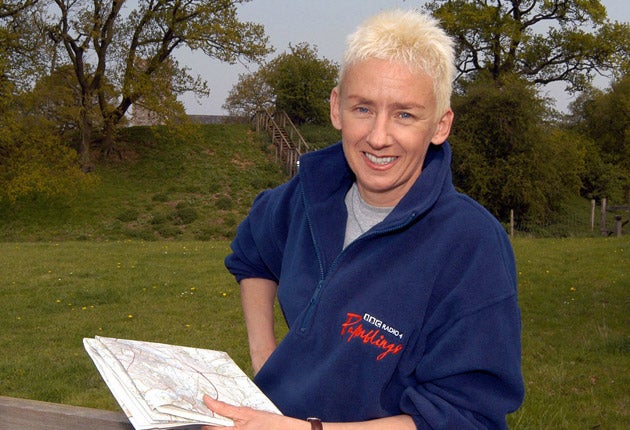Invisible Ink: No 76 - Muriel Gray

Fondly remembered as a TV presenter, this cropped-blonde Scot was a tough-talking broadcaster and journalist in a time of Eighties "yoof" programming, and later appeared on our screens marching up mountains, enthusing about fell walking. What few viewers suspected was that Muriel Gray had a secret life as the author of several terrific (and terrifically creepy) supernatural thrillers.
Authors often jump genres during their careers. Certain types of plot fall from fashion, and writers must change if they are to survive. Gray decided to beat Stephen King at his own game, just at the point when the overloaded genre was starting to wane. The Gothic cycle of the Eighties had ended, and the public appetite for such epics appeared to be satiated. Moreover, Gray had decided to tackle a specific sub-genre within her chosen field: Lovecraftian tales of monstrosities born of alliances between man, myth and nature.
Gray started with The Trickster in 1994, a solid homage to King concerning Native Canadian ritual magic. Four years later came Furnace, which showed more confidence and style. In this idiosyncratic fable, an MR James-style runic curse afflicts a long-distance truck driver in the titular Virginia town.
Gray took her subjects seriously, researching in Canada, then travelling with truckers across America until she had the details down. For The Ancient, which begins in Lima and moves to a supertanker ferrying trash, she created another tale of ancient demonic power and outdid herself, spending several weeks on board such a ship garnering enough information for the plot, and King graciously gave the book an endorsement.
By the time Gray was married and had started a family, she saw that supernatural thrillers were falling from grace, and stopped writing. I remember her describing the look of discomfort other mothers gave her at the school gates when they realised she was the wee woman writing gruesome novels of nameless evil. The super- natural cycle eventually returned, albeit in a watered-down, teen-friendly form, and Gray wrote again. This time, however, she chose a very different subject. The First Fifty: Munro-Bagging Without a Beard is a very funny attempt to explain why some people walk up mountains.
She has since published a work about Glaswegian art galleries, but clearly remains interested in the occult. With so few female writers tackling these kinds of grand mythologies, I think we should demand her return to the field.
Join our commenting forum
Join thought-provoking conversations, follow other Independent readers and see their replies
0Comments